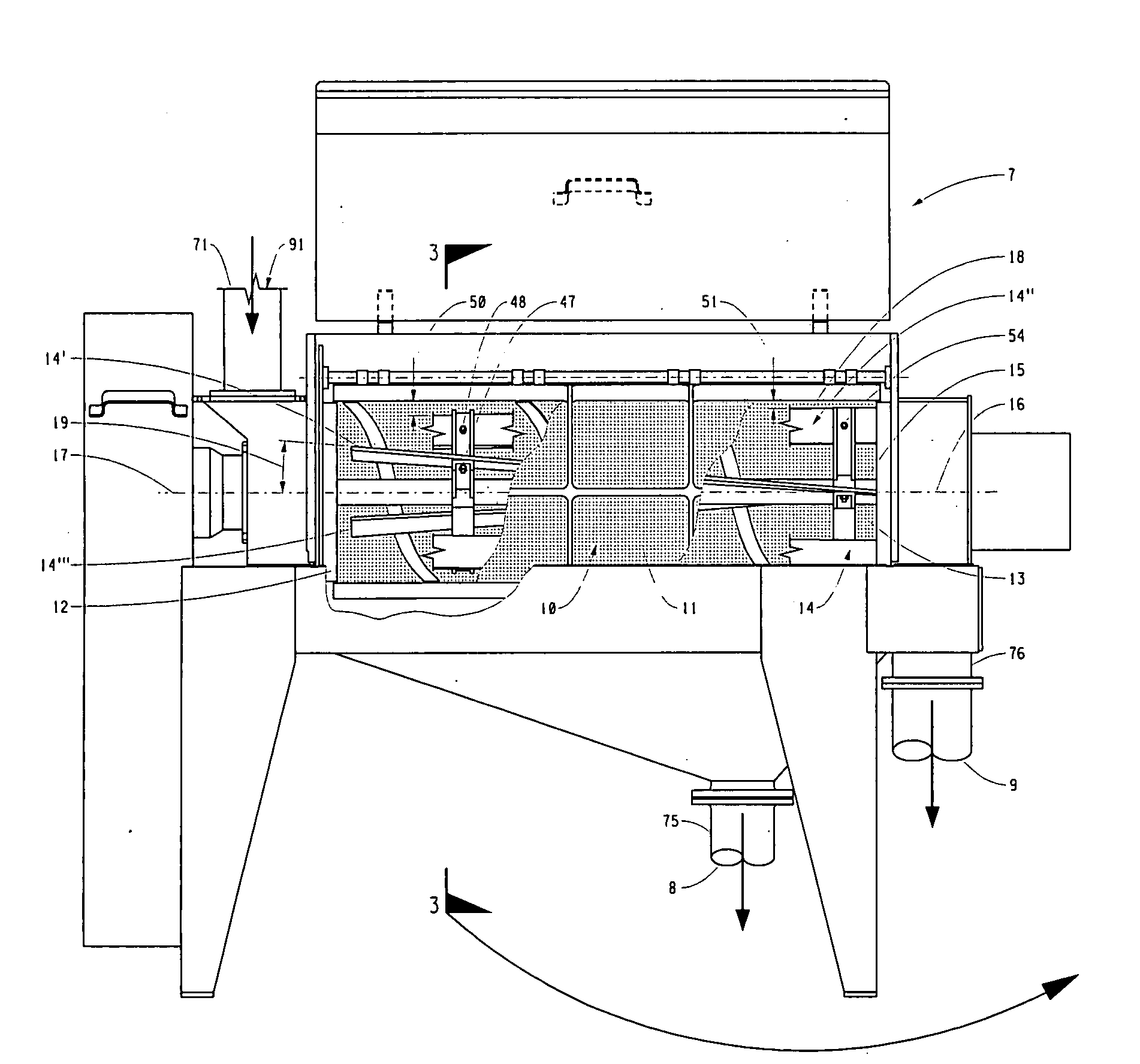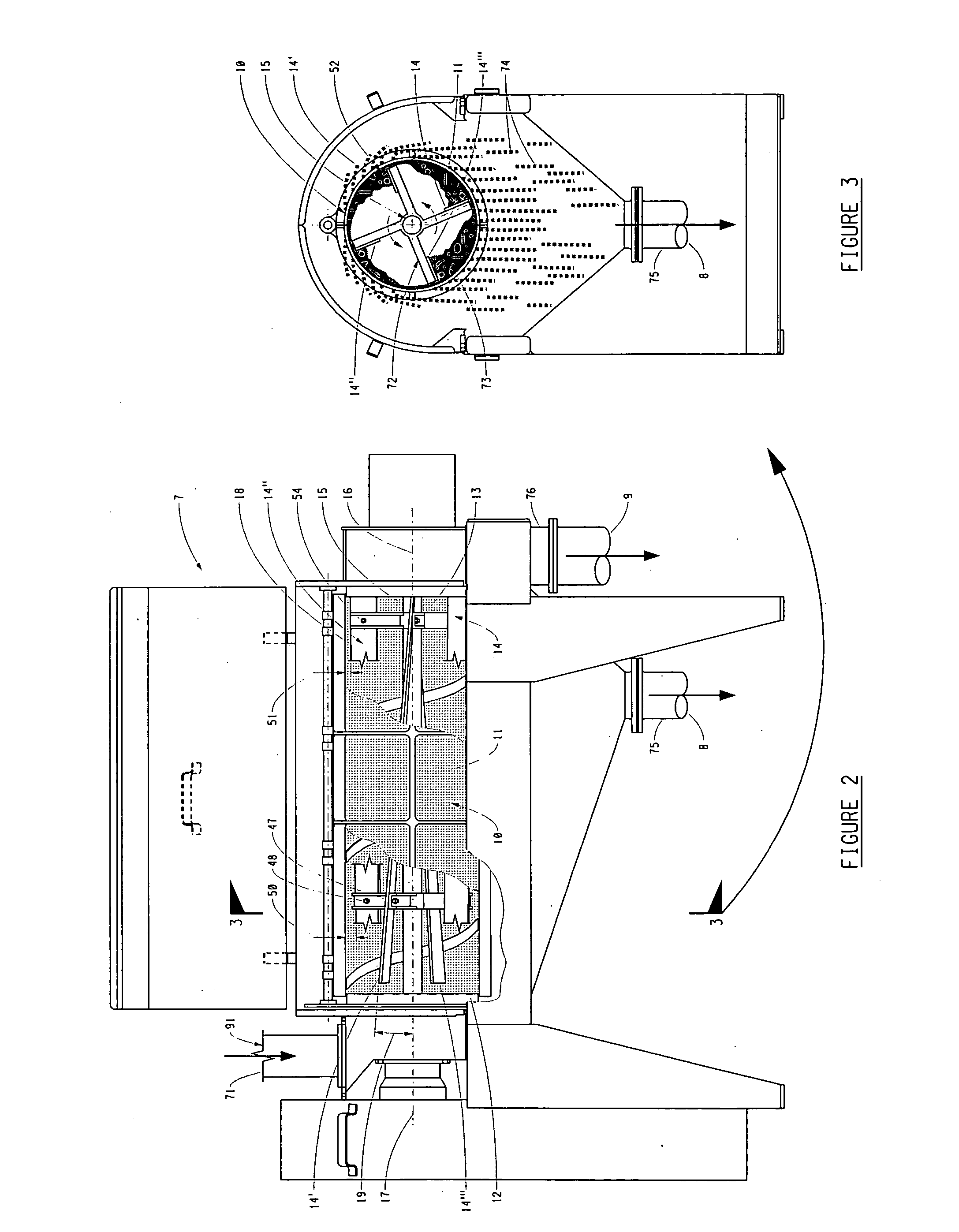Process of treating organic waste for anaerobic digestion
- Summary
- Abstract
- Description
- Claims
- Application Information
AI Technical Summary
Benefits of technology
Problems solved by technology
Method used
Image
Examples
Embodiment Construction
[0014]The process of the present invention for treating organic waste for anaerobic digestion of biogenic-organic substances, comprises the following process steps: preparing a waste-slurry from organic waste; transferring the waste-slurry to a paddle pulper / finisher 7; forming a finisher-slurry 52 in the paddle pulper / finisher and separating a pulp 8 and a pomace 9 from the finisher-slurry 52 in the paddle pulper / finisher 7, the paddle pulper / finisher 7 having a cylindrical screen body 10 formed with small discreetly spaced openings 11 throughout the body between inlet and outlet end openings 12, and 13; at least one elongated paddle 14 extending a substantial portion of the length of the cylindrical screen body 10 carried on a rotating paddle shaft 15 having an axis 16 concentric with the longitudinal axis 17 of the cylindrical screen 10, and the paddle 14 being formed with a paddle edge 18 positioned in close proximity to the cylindrical screen body 10; the paddle 14 having a pit...
PUM
 Login to View More
Login to View More Abstract
Description
Claims
Application Information
 Login to View More
Login to View More - R&D
- Intellectual Property
- Life Sciences
- Materials
- Tech Scout
- Unparalleled Data Quality
- Higher Quality Content
- 60% Fewer Hallucinations
Browse by: Latest US Patents, China's latest patents, Technical Efficacy Thesaurus, Application Domain, Technology Topic, Popular Technical Reports.
© 2025 PatSnap. All rights reserved.Legal|Privacy policy|Modern Slavery Act Transparency Statement|Sitemap|About US| Contact US: help@patsnap.com



